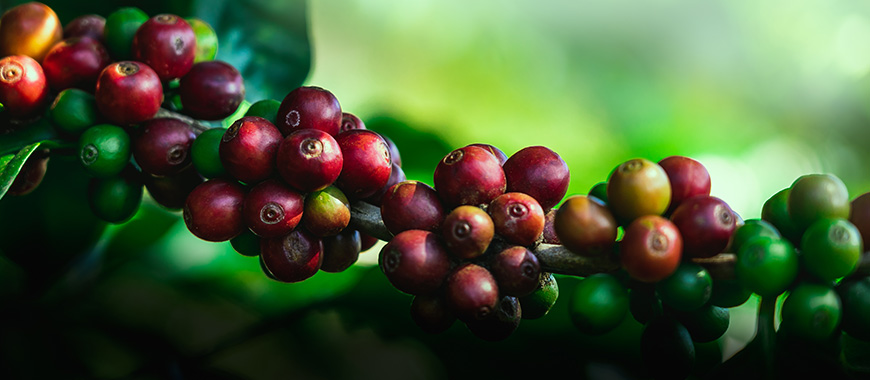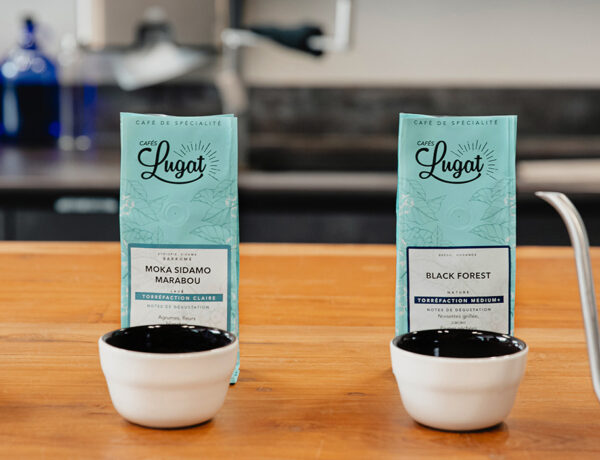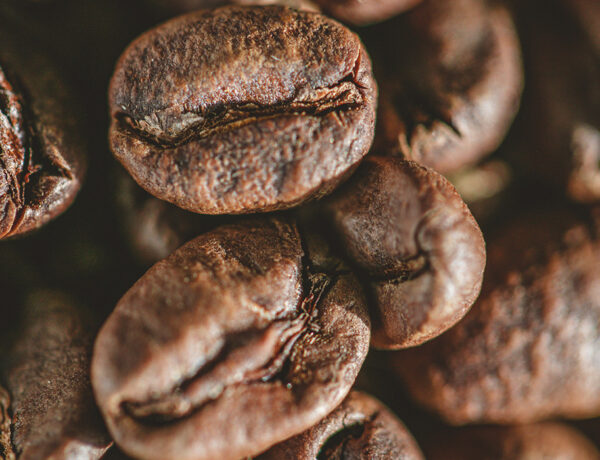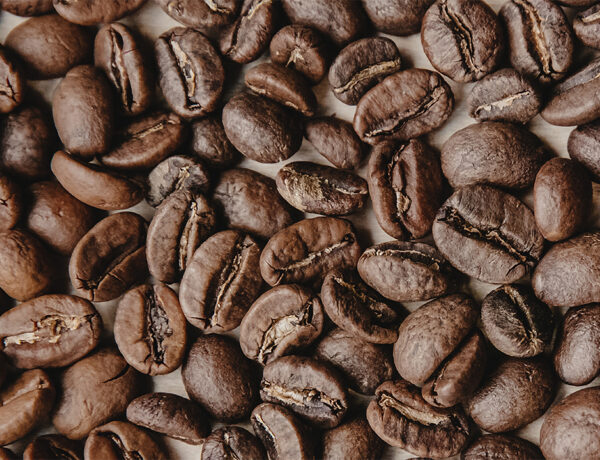
- Home
- The Lowdown on Green Coffee
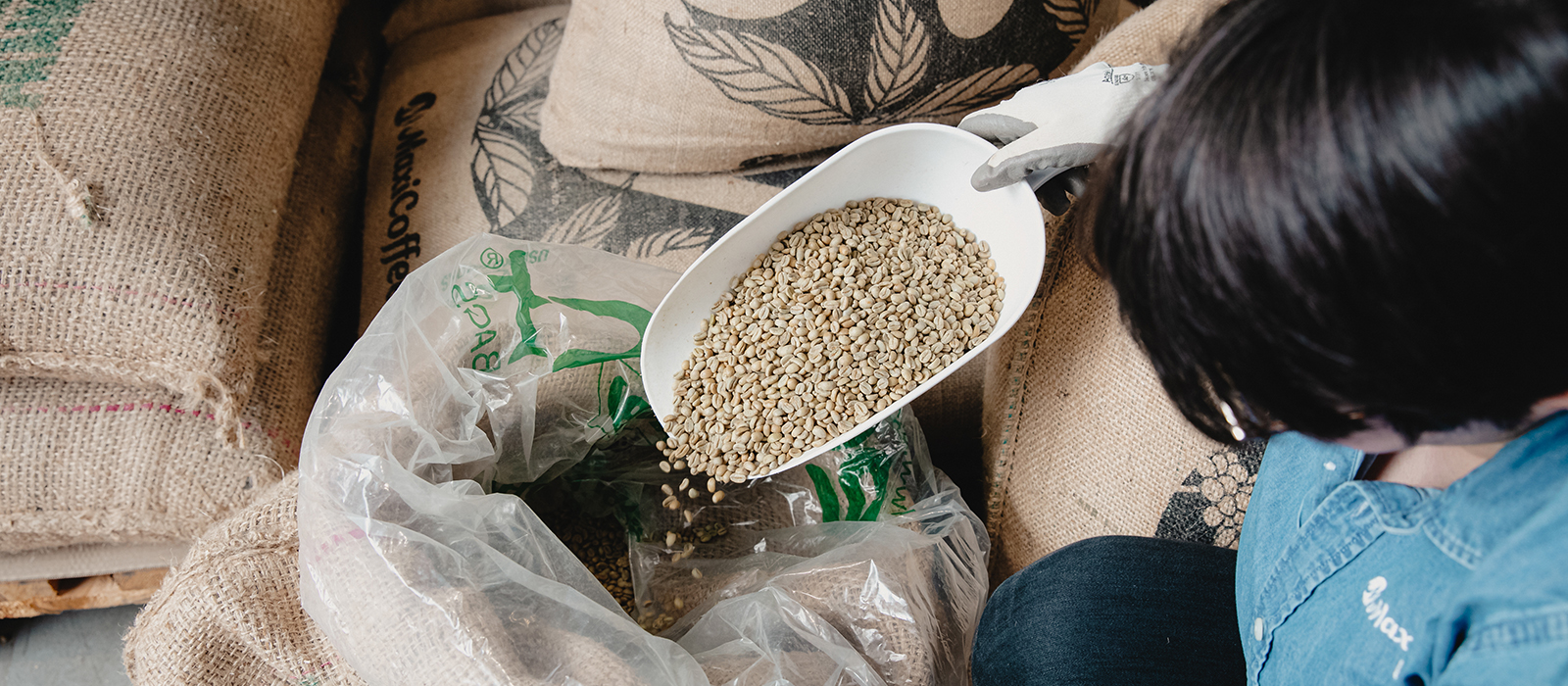
The Lowdown on Green Coffee
Written by Julie
Reading time 7 minEach coffee bean goes through many stages before becoming suitable for consumption and making its way to your cup. And in order to guarantee a final drink of the highest quality, part of the work is done while the beans are still green. Today we’re going to look more closely at green coffee, to give you a better understanding of the subtle flavours that make up your favourite drink.
What is Green Coffee?
A coffee bean is actually the stone of a cherry. Indeed, once coffee cherries have been picked, processed, dried and sorted, what remains are beans with a greenish tinge. Hence we use the term “green coffee” for coffee beans that have not yet been roasted. It is the roasting process that gives the coffee its aromatic characteristics and makes it taste so good. But before we even get to the roasting stage, the beans need to be sorted to ensure the highest quality of green coffee. This sorting process eliminates a number of defects that may have crept into the coffee and could have an impact on the final flavour.
The Different Defects of Green Coffee
Green coffee may develop defects at various stages – from when the beans first grow, right up until the time they are picked and processed. Obviously, the more defects the coffee has, the worse it will end up tasting. We’ve said it before but it bears repeating: coffee is serious business! For this reason, green coffee is always assessed to ensure its quality. The test is usually carried out on a 350g sample of coffee. It is the coffee tester’s job to identify any visual defects and estimate the moisture levels of the batch. It is on the basis of these different criteria that the quality of the beans can be determined. Good to know: once the coffee has been roasted, it is tested again by people known as Q-Graders (professionals who are qualified to assess the quality of each cup of coffee and give it a score). For example, any coffee that scores above 80/100 can be considered to be free from taste defects. This is what’s known as specialty coffee. There are various defects that affect green coffee:
Black Beans
As you will have guessed, this defect refers to the colour of the bean. The bean turns partly or entirely black. This over-pigmentation (causing the bean to darken) is generated by the presence of micro-organisms in the cherry. It results in somewhat sour- or fermented-tasting coffee.
Sour Beans
This defect makes the coffee bean turn yellowish or brown, instead of green. It can be caused by: · Over-fermentation of the coffee cherry during the processing phase. · Late picking. The coffee cherry will be too ripe. · Cherries that have been on the ground for too long before being picked. Depending on how over-fermented they are, coffee made with these beans may be noticeably more acidic or may actually taste fermented.
Fungus
Fungal growth can occur directly on the coffee cherry during the processing and drying stages, if the ambient humidity is too high. The fungus is easy to spot, since it leaves reddish spots on the bean. Coffee that has suffered from fungal damage may have a high phenolic acid content and present a bitter, earthy flavour.
Broken Beans
These are simply coffee beans that have been broken or chipped. This can happen during the pulping phase* of coffee processing, if the machine being used is not properly configured. As a result, bacteria develop in the beans, which can cause a pronounced bitter and fermented taste in the final drink. *This is the act of separating the green coffee bean from the skin and flesh of the coffee cherry, ready to be processed.
Unripe Beans
If the coffee cherry has been picked prematurely, the bean inside will not be ripe. This defect is common at plantations that employ mechanical harvesting techniques. If all the cherries are picked at once, without any process of selection, there is no way to guarantee their quality. Unripe beans tend to be yellow in colour are smaller than beans without defects. When you make your coffee, it may have an astringent or somewhat herbal taste.
Withered Beans
In order to ripen well, the coffee cherry needs dry conditions between its flowering and the development of the fruit. If the bean is withered, it means that it has dried out too much. The resulting coffee will have a straw-like or astringent taste. Note: A withered bean looks just like a raisin!
Foreign Bodies
In other words, anything that isn’t coffee! You can find all sorts among your green coffee beans: twigs, stones, insects, plastic… If you come across any of these, it’s bound to have an effect on the drink in your cup. In short, your coffee won’t taste any good!
Floating beans
These beans have a low density, owing to inadequate storage or drying. This problem is particularly common when poorly controlled mechanical drying techniques are employed. Rather than green, the coffee beans turn white. This defect adds a straw-like quality to the taste, as well as a small hint of fermentation and bitterness. Question: How do you spot a floating bean? Well it floats in water, obviously!
Shell
This defect is caused by a genetic problem in the cherry. The problem is easy to spot, as the beans take on the shape of orecchiette (shell-shaped pasta). This defect generally disappears during roasting, but it gives the coffee a smoky or burnt taste. The affected beans may also be a different colour to the rest.
Dry cherries
Here, the pulp has dried out and is covering part, or even all, of the bean. There are several reasons for this defect. · For washed coffee, it may be due to inadequate pulping or an incorrectly configured machine. · For unwashed coffee, dry cherries can be found if either the hulling or sorting processes have been badly executed. I may as well cut straight to the point: the taste of your coffee will be far from ideal! Fermentation, mould, bitterness, phenolic acid… the list goes on!
Broca Damage
This defect is caused by an insect known as the broca in Spanish. When the cherry is still on the plant, our Public Enemy #1 will bore into the flesh of the bean to reproduce. Visually, this defect can be spotted by the two holes that the insect leaves behind after its little escapade. Its presence can also result in the appearance of mould on the grain, which will also affect the flavour of the coffee. Important to note: the offending insect tends to be found in low altitude plantations.
The Parchment
The parchment, or pergamino in Spanish, is a thin film that covers each bean. It is normally removed during the processing stage. It does not usually cause any defects, since the parchment will tend to burn off during the roasting process. However, you can sometimes find vegetal notes in the taste of your coffee that are linked to the lingering presence of parchment. Please note: The drying method chosen by the coffee farmer can reduce the risk of some of the defects described above. For example, it is more common to find twigs, stones or soil among beans that have been dried on the ground. African beds allow the air to circulate better and the beans are preserved more effectively as a result.
Become a Green Coffee Expert
If this article has sparked your curiosity and you want to know more about green coffee check out our green coffee selection on MaxiCoffee and feel free to get in touch! At MaxiCoffee, our Coffee School offers green coffee training options: basic, intermediate and pro! You can learn how to evaluate a coffee bean and how to recognise high-quality coffee beans. You can also learn all the basics about coffee, from growing coffee plants to storing green coffee. A training programme is ideal for professional roasters, baristas and coffee importers who are keen to learn more about the product they work with every day.
Discover all of our articles
